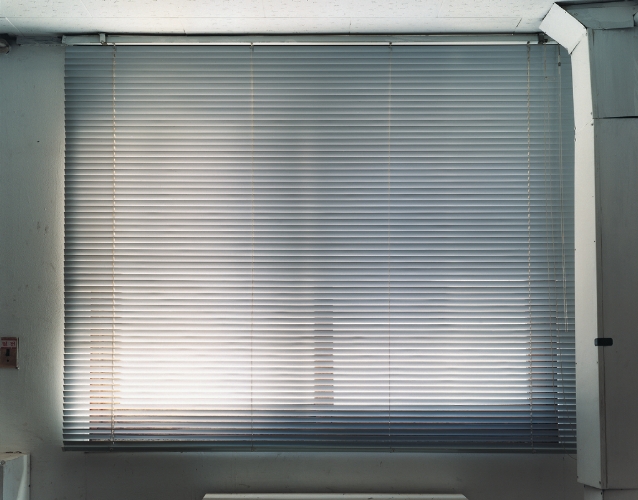
Tomoko Yoneda, Kimusa 02, 2009. C-type print. Courtesy the artist and ShugoArts.
Tokyo Metropolitan Museum of Photography is currently dedicating a perspicacious mid-career retrospective survey (through 23 September 2013) to London-based / Japanese-born Tomoko Yoneda. “We shall meet where there is no darkness” encloses over a decade of pictures within seven individual series as well as one video installation, all painstaking researching and documenting particular places and artifacts that bring back distant memories and preserve deep historical insight of Japan’s relations with its surrounding nations in the past century. Yoneda jointly organized the solo show “Rooms†at ShugoArts – the gallery in Kiyosumi-Shirakawa art complex which represents her – to gather more sets of congruent photographic works such as the “Topographical Analogies†series. (through 7 September 2013)

Koji Nakazono, installation view. Courtesy the artist and Tomio Koyama Gallery. Photo by M-KOS
Tomio Koyama Gallery also resides in the Kiyosumi-Shirakawa complex and is presently offering a first individual show to recent Tokyo Art University graduate Koji Nakazono (through 31 August 2013). Around 50 richly colored paintings are juxtaposed in seemingly random order, sizes, as well as choices of medium and genre, which Nakazano explains as ‘sceneries that I wish to see’. The central gallery space offsets the wall paintings with a flower pot installation, some filled with fresh soil and a single string of coloured yawn touching the gallery ceiling: perhaps this is a makeshift shrine offering, a semi-precious sacrifice to be granted his wish for scenery?

Seia Suzuki, The World A Painting Sees 13_01, 2013. Oil on canvas. Courtesy the artist and Ai Kowada Gallery
The Kiyosumi-Shirakawa building spaces also include Ai Kowada Gallery hosting “The World a Painting Sees” – a solo exhibition of emerging Japanese painter Seia Suzuki (finished 7 August 2013). As the title suggests, Suzuki examines the distance between an artist and his work, which grows inevitably from the artist’s original intention to the relationships that gradually build up to the finished work, and beyond with viewer perceptions, and so on.

Francis Alÿs, Don’t Cross the Bridge Before You Get to the River, 2008. Video still. Courtesy the artist
Museum of Contemporary Art Tokyo welcomes Francis Alÿs’ one-person show, spreading over two chronologically separate programs. The former “Mexico Survey” covered an extensive overview of his artistic activities held in Mexico City, with approximately fifteen projects presented via videos, photographs, paintings and sculptures. The latter “Gibraltar Focus” features a new, large-scale video installation project held in the Strait of Gibraltar, entitled: “Don’t Cross the Bridge Before You Get to the River”, along with drawings, sketches, small sculptures and photographs on the same theme. The two-channel video saw face-to-face projections screens, where one depicted a dozen young flip-flop clad Moroccans, walking into the gentle waves of the sea while holding handmade miniature yachts. Mirrored in the second screen, Spanish youths were enthralled in the same action, in an attempt to imagine a bridge between the said Strait. (Through 8 September 2013)

Ming Wong, Me in Me, 2013. Still from Multi-Channel Video Installation. Courtesy the artist and Shiseido Gallery
Commissioned by Shiseido Gallery in Tokyo’s Ginza district, Singapore-born / Berlin-based artist Ming Wong presents “Me in Me”, a three-channel film installation inspired by Japanese cinema and traditional performing arts. Wong examines the history of the Japanese silver screen from the perspectives of three specific genres: Jidai-geki (historical); Gendai-geki (Modern); and Anime. Wong reconstructs and edits a place for himself in these films to integrate a personal interpretations of the dialogues herein, as well as the narratives threads and performance techniques that highlighting issues of racial, cultural and national identity as well as gender, language and body politics. (Through 22 September 2013)

Sigalit Landau, Out in the Thicket, 2013. Video installation. Courtesy the artist.
Meanwhile in Tokyo’s trendy Ginza neighborhood, La Maison Hermès / Le Forum provides a high end art space for the fashion label, to accommodate “The Ram in the Thicket” at the time of our visit: two large installations by Israeli artist Shigalit Landau. A first video installation consists of four vertical screens illustrating how olive trees are violently shaken to harvest ripe olives from a grove in southern Israel’s Negev Desert. The installation incorporated the harvesting machines as repurposed sculptures, designed to shake humans with equal ferocity. The second installation entitled “Behold the Fire and the Wood†displayed a typical Israeli domestic space of the 1950s, to subtly tell the story of its inhabitants and reveal the history of the land of Israel as much as the artist’s personal secrets. (Finished 18 August 2013)
